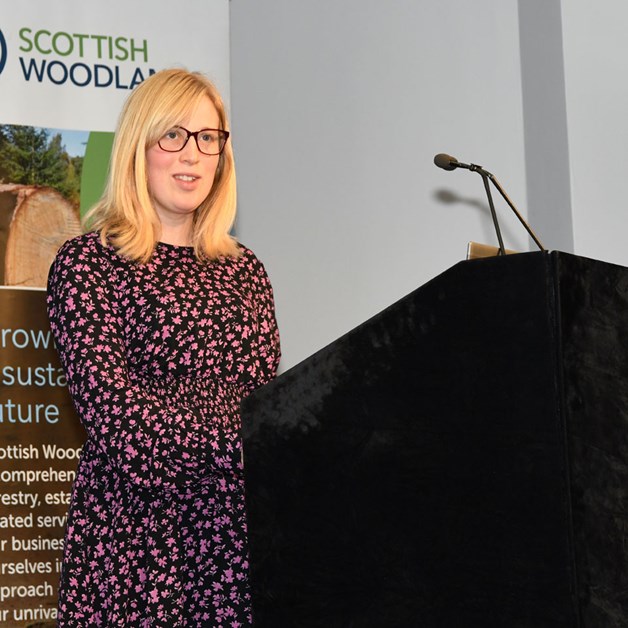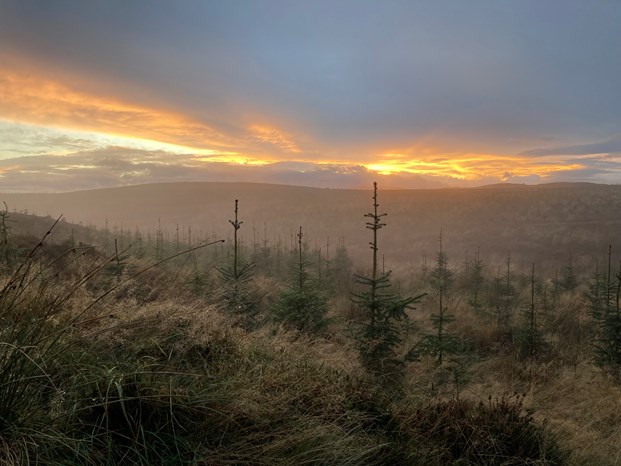Woodland Carbon Code warning from SWL expert
Scottish Woodlands' Emma Kerr has warned a policy conference of the potentially damaging consequences for timber supply and rural jobs from changes to the Woodland Carbon Code.
Ms Kerr, SWL's Head of Carbon and one of the industry's leading carbon experts, described the possible impacts of changes made to the Code in late 2022 at the event at Westminster. SWL was one of the sponsors of the conference, Green Growth: Why Wood is The Missing Low-Carbon Link.
Ms Kerr used a case study of Tillyrie in Perthshire, a planting scheme of 86.96 hectares managed by SWL for James Jones & Sons Limited. She examined how the project, which was planted before the 2022 changes took effect, would have been affected by the updated rules if planted today.

She noted that, despite the original plan being UK Forestry Standard compliant, that under the new rules the net productive conifer area at Tillyrie would have to be reduced by almost 50% to qualify for support under the Code's new 'additionality' rules.
James Jones & Sons Limited analysed how much productive timber would come from the existing site - and the impact of timber output developing it under the new rules. This revealed the current scheme would yield 37,732 tonnes of productive material, whereas the reduced conifer scenario would yield 19,809 tonnes - a significant loss at a time when the UK needs more home-grown wood at a time of soaring global demand for timber.
Ms Kerr explained the impact of the reduction on the potential carcassing material to use in construction, just one of the timber products. The current scheme is predicted to yield 4,500 cubic metres of carcassing material, compared to 2,262 cubic metres in the reduced conifer model.
For further perspective, she said this would mean that 472 new homes could potentially be built from timber from Tillyrie under the new rules, against 900 under the old system.
"Bearing in mind the UK Government has a strong commitment to building new houses, we need as much UK grown carcassing material as possible," she said.
Ms Kerr said Tillyrie was just one small scheme, but there were broader consequences.
"If you extrapolate our findings to all schemes where landowners are seeking carbon credits, the reduction of new productive conifer area, and timber for construction would be very significant across the UK. The new rules risk inducing a behavioural change in landowners looking to seek carbon credits away from productive conifer forestry when these conifer plantations will deliver high integrity reliable verified carbon credits at a fast rate, in a crucial timeframe before 2050."
"These are potentially very serious unintended consequences at a time when the UK is seeking to produce more home-grown wood and build more sustainable homes to reach net zero by 2050. It risks undermining efforts to reduce the UK's very high level of timber imports - at the moment, we import 81% of the wood we use to make wood products in the UK. This can't be sustained when timber demand is growing globally. It also undermines the strong commitment to achieving net zero by 2050."

(Photo supplied by James Jones and Sons Limited)
Ms Kerr said there was also a likely rural jobs impact: "Each 25 hectares of productive conifer will typically provide 3 1 sustainable job therefore the current scheme will support 3 jobs, whereas the reduced model would halve the number of jobs. Again, if you extrapolate this across all the schemes that could qualify for carbon credits under the Code, it could be very significant."
The conference also saw the launch of the National Wood Strategy for England, a blueprint for change designed to ensure timber production is prioritised in forestry and wood policymaking.
New Forestry Minister Rebecca Pow MP addressed the forestry and wood industry for the first time at the event. She said: “The timber industry is critically important and something we need to give more focus to. We need woodland creation of all types, delivering for the economy, nature and the environment…including productive mostly conifer woodlands which absorb carbon faster and contribute to the green economy through timber. This is why we will continue to support the planting of well-designed, mixed and conifer-dominated woodlands.”